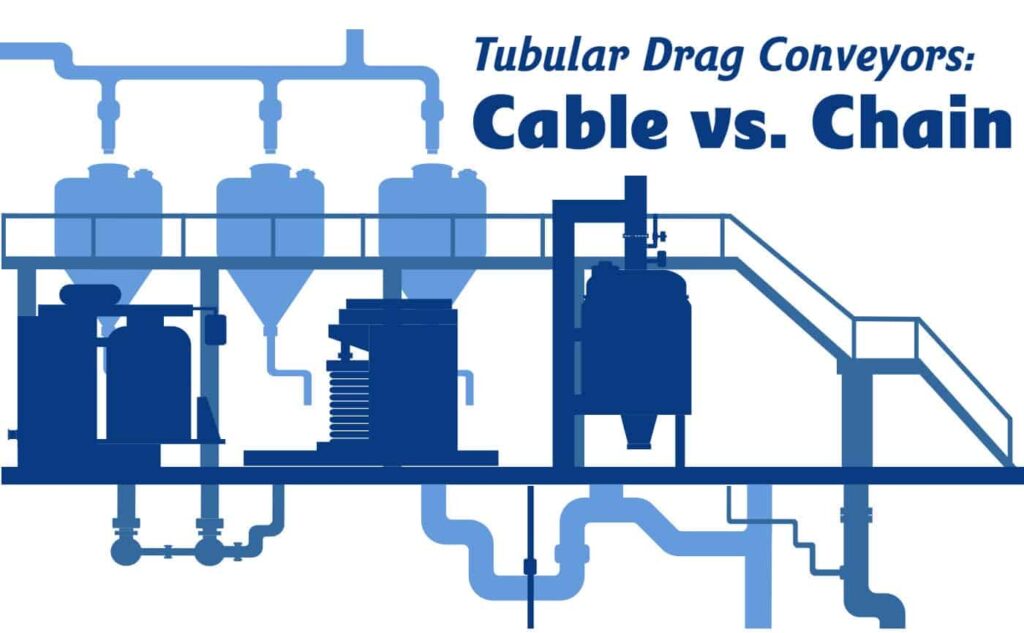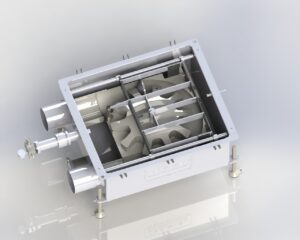For manufacturers handling food processing or any other bulk material, the conveyor belt system has found its place as the system of choice. This is simply because of their layout flexibility and other benefits they bring. But if you’re wondering about the difference between tubular drag conveyors – cable vs. chain, we will break down their components and operation to help manufacturers choose the conveyor belt for food that would benefit their processing more.
The Importance of Tubular Drag Conveyors in Manufacturing
Tubular drag conveyors, whether cable or chain, play a vital role in modern manufacturing processes. These conveyors offer numerous advantages that enhance efficiency, productivity, and product quality. If a manufacturer wants to apply a reliable and controlled means of material transportation, tubular drag conveyors ensure consistent and precise handling of various materials. These materials can range from delicate and fragile products to heavy and abrasive substances.Additionally, the customizable nature of tubular drag conveyors allows manufacturers to optimize their production processes. They can also help minimize material loss, reduce downtime, and maintain a high level of operational safety.
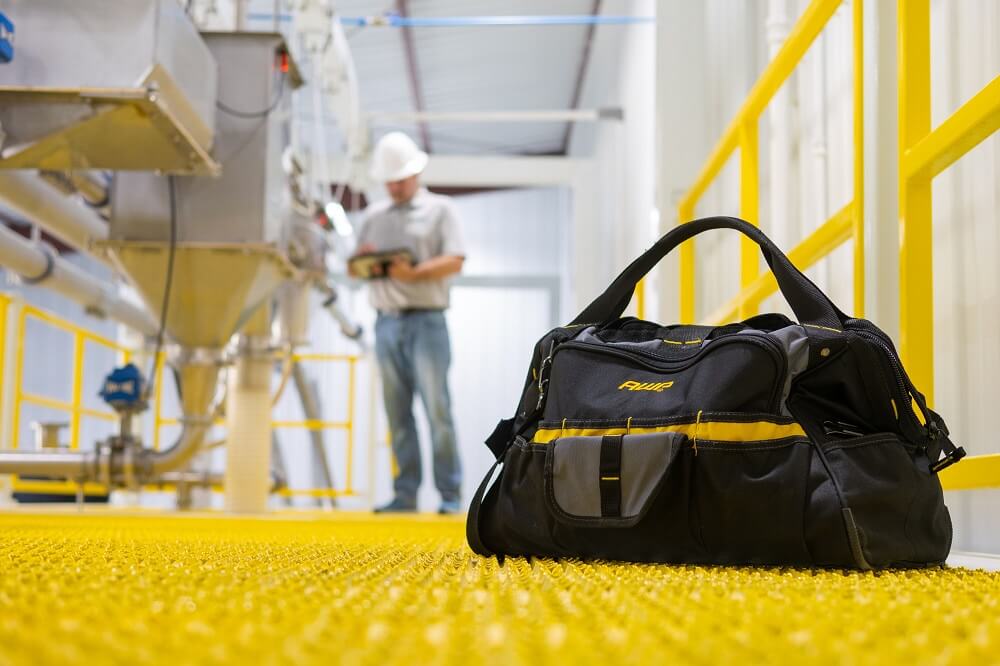
Cable Drag Conveyors
To be able to differentiate between these two similar yet different industrial conveyor belt systems, we will explain their operation and components to detail. A cable drag conveyor is a belt conveyor system that uses flexible cables, drive assemblies, and discs or pucks to transport materials. There are several advantages they offer:
- Flexibility and adaptability in navigating around obstacles and corners.
- Gentle handling of delicate materials, minimizing the risk of product damage.
- Relatively low maintenance requirements, reducing downtime and operating costs.
- They can handle a wide range of material types, including powders, granules, and fragile products.
- Generally, they produce lower noise levels during operation compared to other conveyor types.
- They are designed to optimize space usage, so they can be configured to fit into tight spaces or layouts where other types of conveyors may not be feasible.
- Lower power requirements compared to other conveyor systems. This energy efficiency can result in cost savings and contribute to overall sustainability efforts.
Keep in mind that they have some limitations, as they are limited in capacity and the weight of the material they are handling.
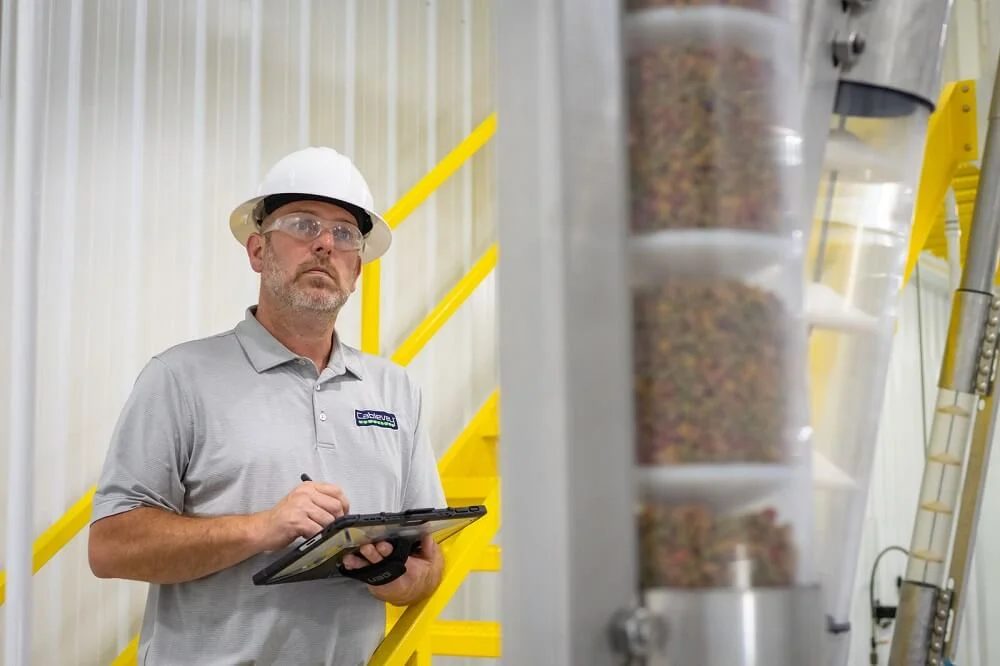
Chain Drag Conveyors
Chain drag conveyors are just another variant of bulk material handling equipment. However, unlike cable drag conveyors, they use rigid chain links, drive assemblies, and an en-masse conveying system. There are several distinct benefits that make these conveyors suitable for various applications:
- High conveying capacity for efficient transportation of large volumes of materials.
- Suitable for heavy-duty applications and capable of handling heavy materials.
- Enhanced durability and longevity, making them robust for rigorous operating conditions.
- They can be tailored as a custom conveyor belt to meet specific application requirements, including inclines, declines, and horizontal conveying.
- The enclosed tube and the en-masse conveying system ensure that materials are contained within the conveyor and, as such, reduce waste, improve cleanliness, and enhance efficiency.
- They can be easily integrated into automation conveyor systems, enabling seamless material transfer and allowing efficient automation of the processing.
- They are built with rugged and durable components, including robust chain links, ensuring long-lasting performance – even in harsh environments.
Although, you should keep in mind that they are less flexible compared to cable conveyors and may require more maintenance.
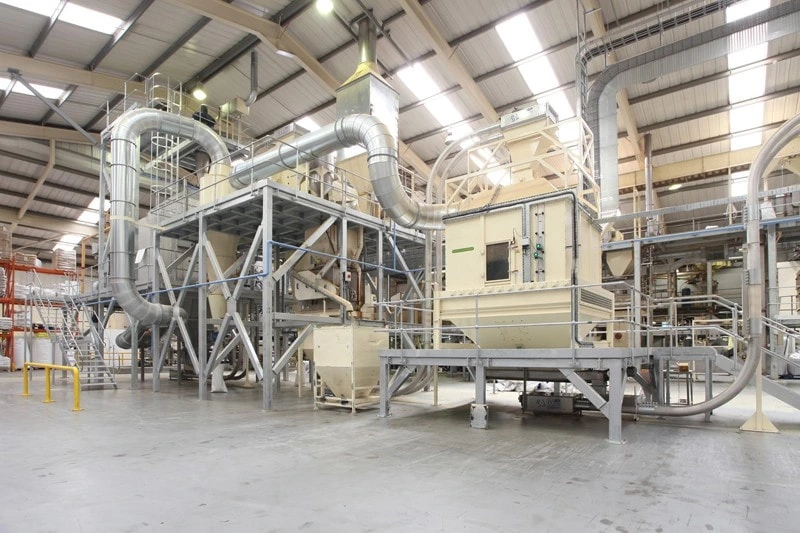
Tubular Drag Conveyors: Cable vs. Chain – Operational Differences
Now, let’s examine the operational differences between these two systems, which lie in their fundamental mechanisms. You can see the comparison in the table below.
| Operational Differences | Cable Drag Conveyors | Chain Drag Conveyors |
| Transport mechanism | Flexible cables and discs or pucks | Rigid chain links and en-masse conveying system |
| Flexibility | Highly flexible, can navigate obstacles and corners | Less flexible compared to cable conveyors |
| Conveying capacity | Limited conveying capacity | High conveying capacity for large volumes |
| Material handling | Gentle handling, suitable for delicate materials | Suitable for heavy-duty applications and heavy materials |
| Maintenance | Low maintenance requirements | May require more frequent maintenance |
| Operating conditions | Suitable for lighter materials | Suitable for rigorous operating conditions |
| Power use | Relatively lower power requirements | Efficient power usage |
Application Considerations
Before you decide on the conveyor that’s best for the type of processing you need, you should take several factors into consideration. Material characteristics play a significant role in making the better choice when it comes to conveyors. This includes density, flowability, and fragility. Capacity requirements are another factor you should consider, space limitations and operating conditions included.
Maintenance and Safety
Maintenance requirements and safety considerations are essential aspects of operating tubular drag conveyors. Cable drag conveyors typically have lower maintenance needs due to the simplicity of their design, while chain drag conveyors may require more frequent maintenance to ensure optimal performance.
Both systems require regular inspection, lubrication, and cleaning to prevent issues and extend their lifespan. Additionally, safety precautions such as proper guarding, emergency stop mechanisms, and adherence to operational guidelines are vital to ensure the well-being of operators and prevent accidents or injuries.
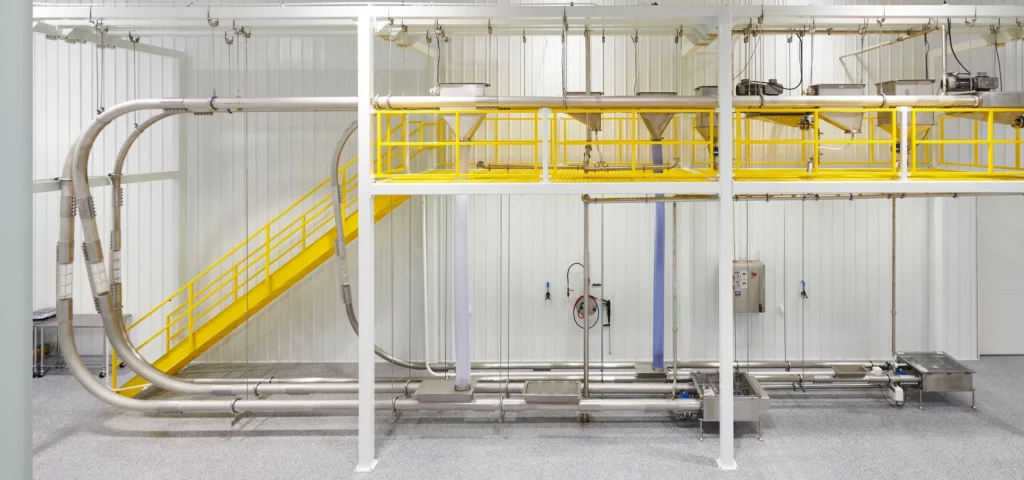
Making Informed Decisions for Optimal Material Handling
Understanding the operational differences between cable drag conveyors and chain drag conveyors is crucial in selecting the most suitable conveying solution for specific applications. By considering factors such as material characteristics, conveying capacity requirements, and operational conditions, a manufacturer can make an informed decision to optimize their material handling processes and improve overall efficiency.If you are looking for reliable and efficient tubular drag and cable materials handling equipment, you should look no further. Cablevey Conveyors is a leading company in the field, specializing in designing and manufacturing high-quality conveyor systems. With our expertise in tubular drag and cable conveying technology, we offer tailored solutions to meet specific industry needs. You can contact us and inquire about our products and solutions and take your material handling capabilities to the next level.
FAQ
What Is the Difference Between Cable and Chain in Tubular Drag Conveyors?
The difference between cable and chain in tubular drag conveyors lies in the components used for material transport. Cable conveyors use flexible cables and discs or pucks, while chain conveyors utilize rigid chain links and an en-masse conveying system.
Which One Is Better: Cable or Chain Conveyors?
Whether cable or chain conveyors are better depends on specific application requirements. Cable conveyors offer flexibility, gentle handling, and low maintenance, while chain conveyors excel in high conveying capacity, heavy-duty applications, and durability.
What Are the Advantages of Using Cable in Tubular Drag Conveyors?
The advantages of using cable in tubular drag conveyors include flexibility in navigating obstacles, gentle handling of delicate materials, and lower maintenance requirements.
What Are the Advantages of Using Chain in Tubular Drag Conveyors?
The advantages of using chains in tubular drag conveyors include high conveying capacity, suitability for heavy-duty applications, enhanced durability, and efficient material flow.
How Does the Choice Between Cable and Chain Impact Conveyor Performance?
The choice between cable and chain in tubular drag conveyors impacts conveyor performance in terms of flexibility, conveying capacity, material handling capabilities, and maintenance requirements.
Are Cable Conveyors More Suitable for Certain Types of Materials Than Chain Conveyors?
Cable conveyors are more suitable for handling lighter or delicate materials that require gentle handling and flexibility.
Are There Any Limitations or Considerations When Using Chain Conveyors?
Limitations and considerations when using chain conveyors include less flexibility compared to cable conveyors, higher maintenance requirements, and higher initial investment costs.
Can Cable and Chain Be Used Interchangeably in Tubular Drag Conveyors?
Cable and chain are not interchangeable in tubular drag conveyors as their design and components are different, leading to variations in performance and capabilities.
What Factors Should Be Considered When Deciding Between Cable and Chain Conveyors?
Factors to consider when deciding between cable and chain conveyors include material characteristics, conveying capacity requirements, operational environment, and cost considerations.
Get more details on the Cablevey Conveyors 2”, 4”, 6”, and 8” systems, including capacity, common foods conveyed, cleaning equipment, and more.

